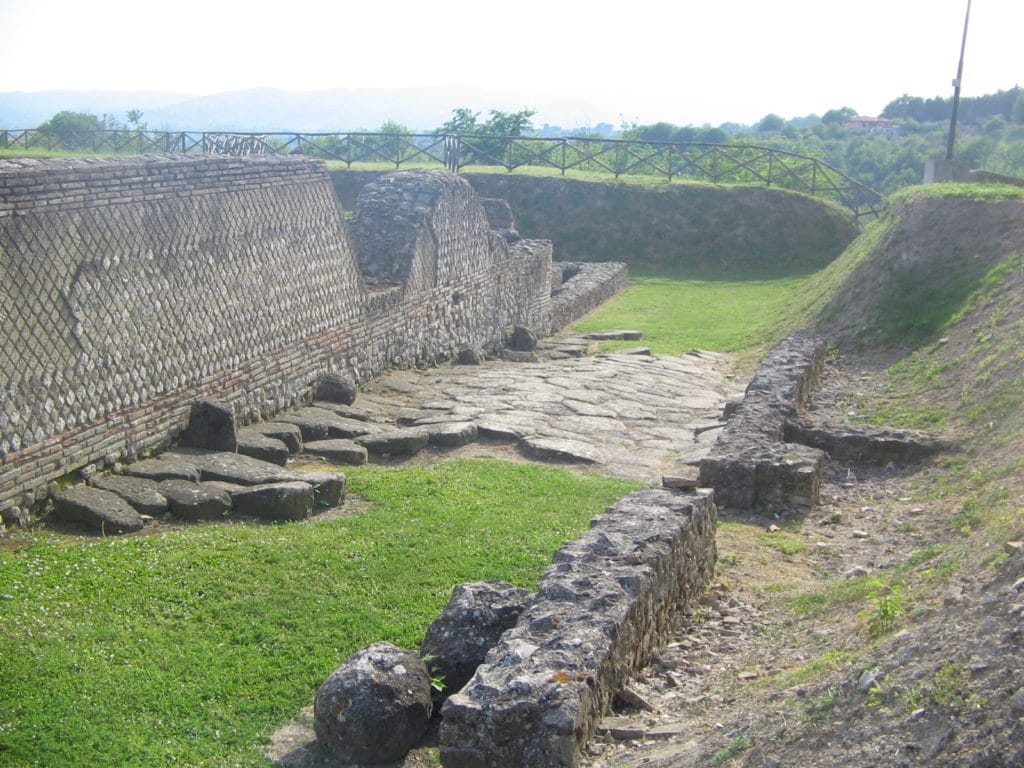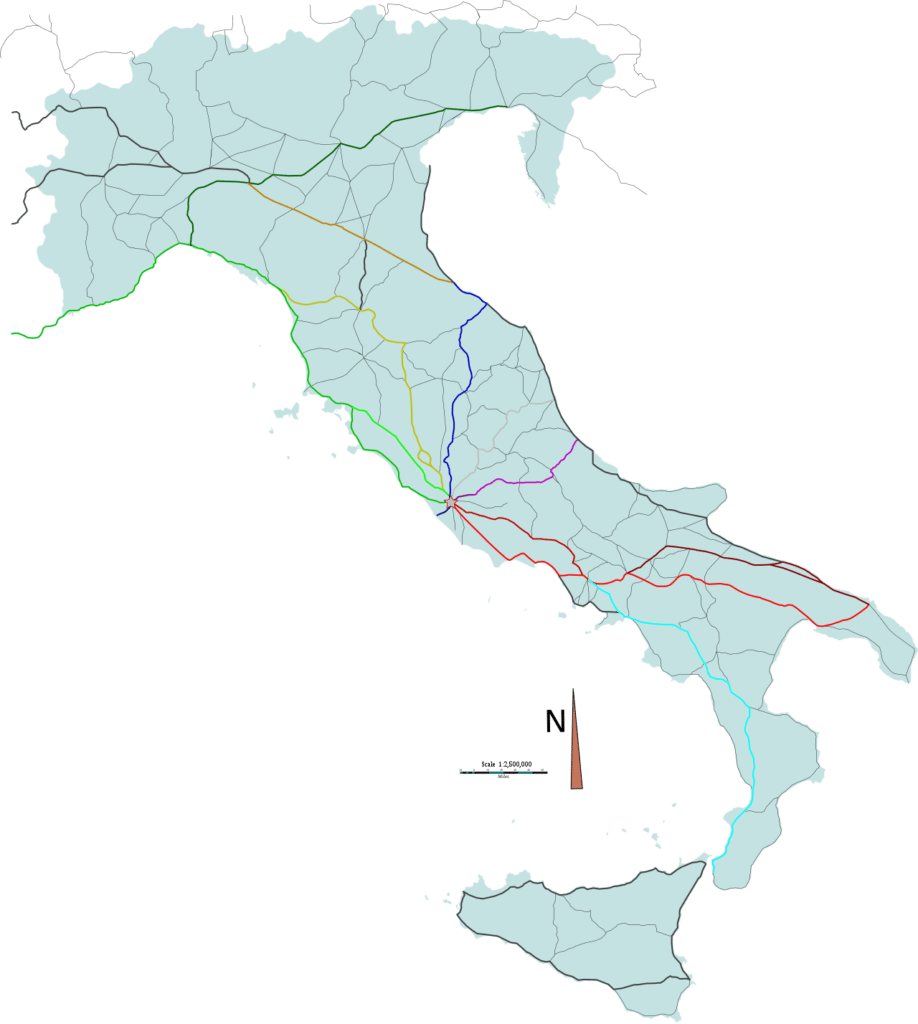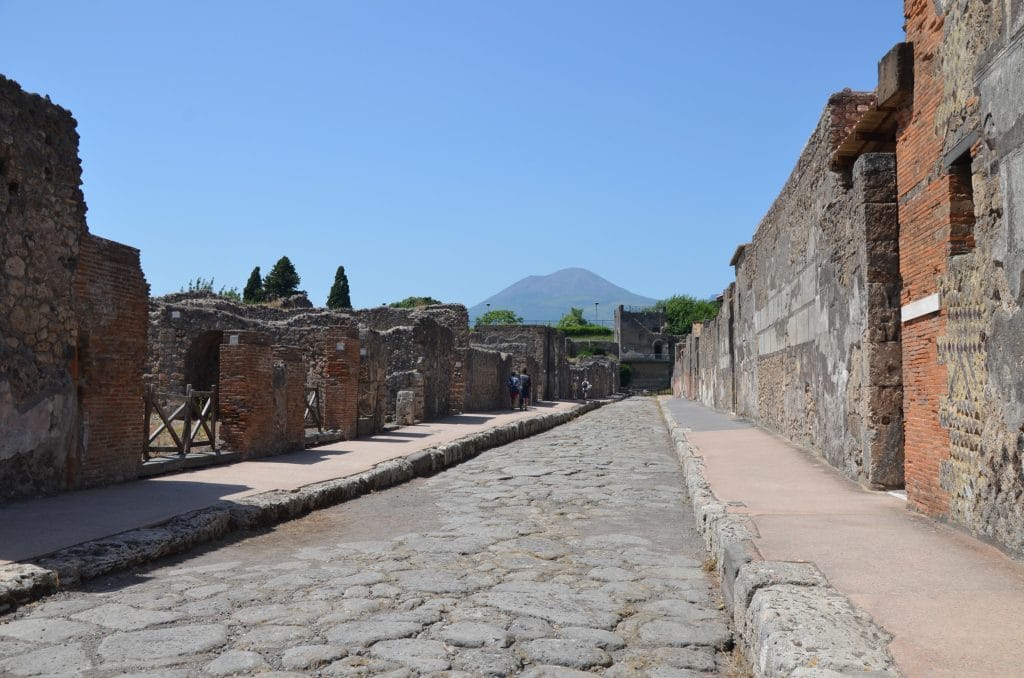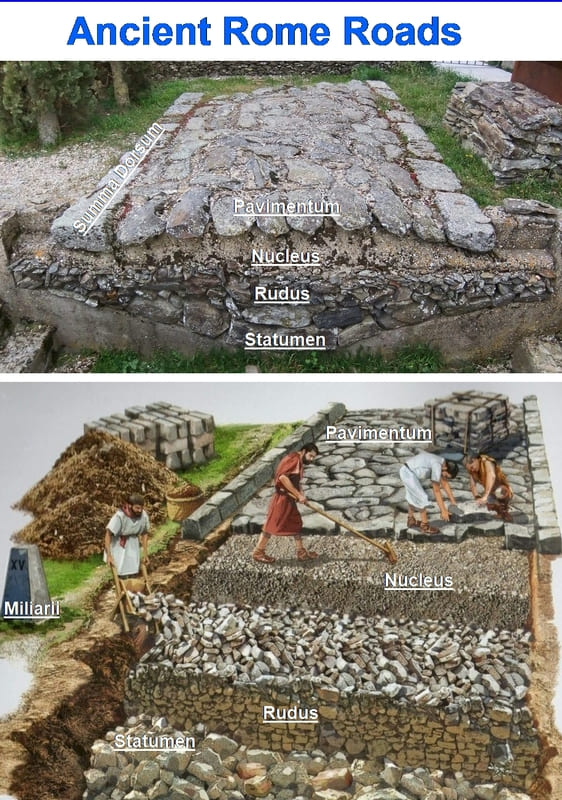In 1810, by which time he had built an empire that spanned most of continental Europe, if the Emperor of France, Napoleon Bonaparte, wanted to get a message from Paris to Rome, he couldn’t send it any faster than the Romans were able to nearly 2,000 years ago.
By the first and second centuries AD, at the height of its empire, Rome had created a network of roads across Europe, the Levant, and North Africa, which allowed people to travel as fast and efficiently as was possible before the advent of steam engines.
Here we examine the impressive engineering feat that was the Roman road network.

What Were Roman Roads Like?
The Roman roads were built uniformly, with the parameters varying depending on whether they were main arterial roads connecting substantial towns and cities or regional roads.

Roman Road Network on Italian Peninsula
The viae publicae or public roads were the more substantial, often up to seven meters wide. These were for heavy traffic and, notably, for the legions to be able to march quickly between provinces. Consequently, these were often referred to as viae militares, meaning military roads or ways.
On the other hand, there were also much smaller roads, variously known as the viae rusticae or viae agrariae, effectively meaning rural roads or farming roads.

A road in Pompeii, paved with polygonal paving stones. Photo by Carole Raddato. CC BY-SA 2.0
Depending on the exact purpose of these smaller roads, they could be as narrow as a meter and a half but usually measured somewhere between three and a half meters.
The intention here was that these would be wide enough for a horse or a horse-drawn cart to pass along.
How Were Roman Roads Built?
Roman roads were built with an under-layer of crushed rubble, placed on leveled-out and flattened ground to eliminate bumps and undulations. This made for a nice, smooth pathway that had the advantage of efficiently draining water off.
On the more regional roads, this might have been the top surface of the road, but larger public roads were paved and filled in using concrete.
The Romans were highly skilled in engineering. They carried out these processes only after they expansively surveyed the area to determine the best sites to build a road.

Throughout the construction process, a very precise layering of different-sized stones and materials was laid in place and then compacted to ensure the road was as securely built as possible.
When it was finished, edge stones were placed along the sides of the road itself, and then a crepido or footway was constructed at a slight elevation from the road itself on either side. Thus, Roman roads also had curbs and footpaths.
Finally, a significant road maintenance system developed during the Republican period and expanded under the empire. This saw commissioners appointed to each province to oversee the upkeep of the roads in their areas.
The Appian Way
The Romans built many famed roads, but perhaps none was as central to the Roman identity and their history as the Appian Way.
This ran from Rome itself southwards along the coast of Italy to the town of Capua and then forked eastwards towards Brindisi in the southeast of the peninsula.